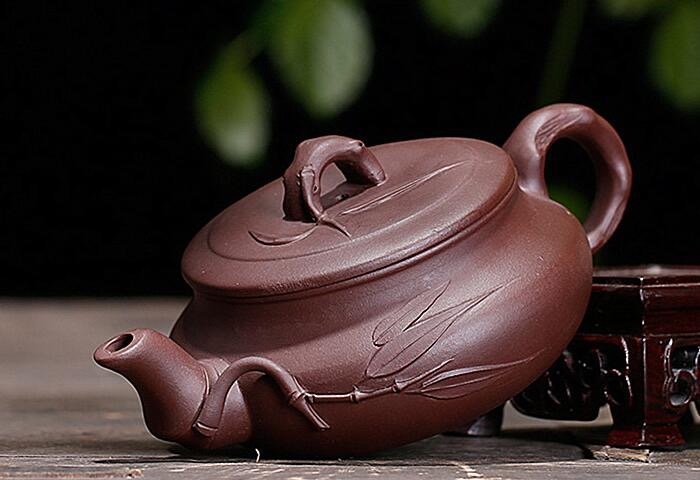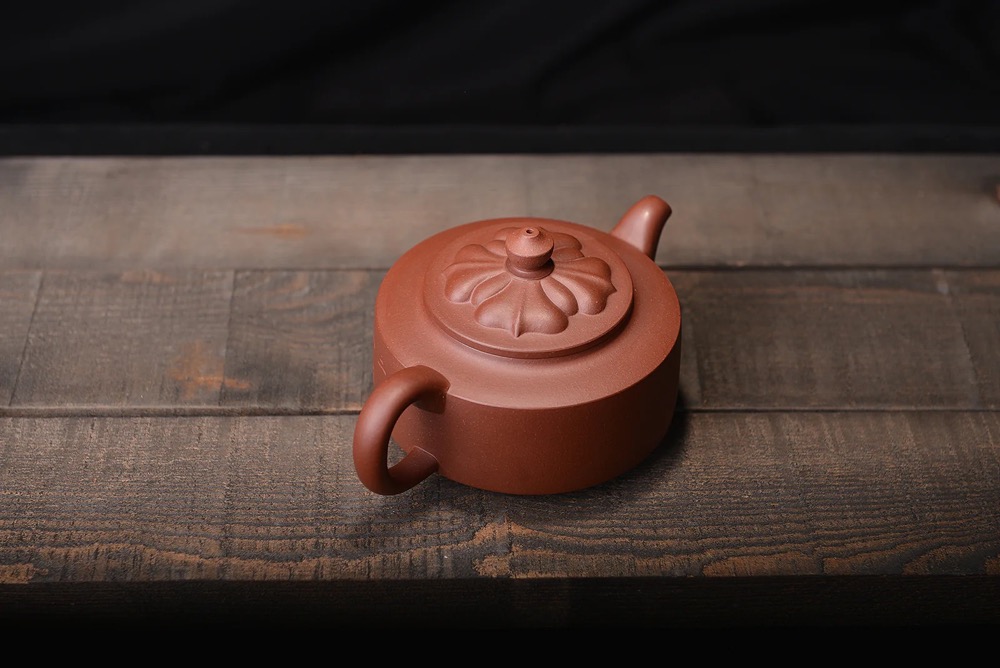A Chinese clay teapot, also known as a Zisha teapot, is a traditional teapot made from a special clay known as “Zisha” or “Purple clay.” This type of clay is found in the Yixing region of China and is prized for its unique porous nature, which allows the teapot to absorb the flavors and aromas of the tea. These pots are also considered a traditional art form in China, with some fetching high prices due to their intricate designs and high-quality craftsmanship. Keep reading to learn more.
What is clay teapot

A Chinese clay teapot is a traditional tea brewing device made of Yixing clay, a type of porous clay found in the Yixing region of China. The unique porous texture of the Yixing clay allows it to absorb tea oil, which enhances the flavor and aroma of the tea. These teapots come in various shapes and sizes and are typically small, allowing them to brew a single serving of tea.
Yixing clay teapot history
The Yixing clay teapot has a long and rich history dating back to the Ming Dynasty in China over 500 years ago. Yixing clay was first discovered in the Yixing region of China and was initially used to make various household items such as jars and vases. The Yixing teapot as we know it today was first created in the 16th century and quickly became popular among tea connoisseurs for its ability to enhance tea flavor.
Over the centuries, Yixing teapots have evolved in design and function, creating new shapes and techniques for decorating and glazing clay. Today, Yixing teapots remain a popular choice for tea enthusiasts. The tradition of hand-crafting teapots continues in the Yixing region, with skilled artisans creating new and innovative designs.
Who made Yixing clay teapot?

Yixing clay teapots were traditionally made by skilled artisans in the Yixing region of China. These artisans passed down their knowledge and techniques through generations and continue to craft high-quality Yixing teapots using traditional methods. Also, the origin of Yixing clay teapots is not well documented, so it is impossible to determine who exactly invented them.
Yixing clay types
There are several different types of Yixing clay, each with its unique properties and characteristics. Some of the most common types of Yixing clay include Zisha, purple sand, and red clay. Zisha clay is the most well-known type due to its unique properties, making it ideal for tea brewing. Purple sand clay is a more porous type of clay that is prized for its ability to absorb and retain tea oil. Red clay is a type of Yixing clay that is known for its rich red color and fine texture.
What is the size of a Yixing teapot, and why?
Yixing teapots are typically small in size, ranging from 4 to 12 ounces. This is because these teapots are designed for brewing a single serving of tea. The small size of the teapot allows for precise control of the temperature and steeping time, resulting in a more flavorful and aromatic tea. Additionally, the small size of Yixing teapots also makes them portable and easy to store.
How can you tell if a Yixing teapot is real?

There are several ways to tell if a Yixing teapot is real or fake:
- Clay Quality: Authentic Yixing teapots are made from high-quality Yixing clay that is dense, fine-textured, and has a unique porous structure. If the clay is rough, has visible cracks, or feels lightweight, it may be a fake.
- Markings: Many authentic Yixing teapots have markings or stamps on the bottom that indicate the potter or workshop that made it. If there are no markings, or if the markings look fake, it may be a fake teapot.
- Authenticity Certificates: Some authentic Yixing teapots come with authenticity certificates from the potter or workshop, which can be used to verify their authenticity.
How to use Yixing teapot
To use the Yixing teapot, add loose tea leaves to the teapot, then fill it with hot water. Let the tea steep for the desired time, then pour it into cups. Repeat the brewing process until the tea has reached the desired strength. It is essential to use a separate Yixing teapot for each type of tea to preserve its unique flavor and aroma. Clean the teapot after each use, and store in a dry place.
How to clean Yixing teapot
To clean, rinse the teapot with warm water and gently scrub it with a soft brush. Avoid using soap, as it can leave residue and affect the flavor of the tea. To remove any tea stains, gently scrub the inside of the teapot with a mixture of warm water and rice. Rinse thoroughly and let it air dry completely before storing. Avoid soaking the teapot in water for an extended period, as this can cause damage.
How to make a Yixing teapot
First, the clay is molded into the desired shape using a mold or by hand. Then, it is dried and fired in a kiln to harden the clay and remove any moisture. After firing, the teapot may be glazed to create a smooth surface and enhance its appearance. Finally, it is fired again to set the glaze. Making a Yixing teapot requires skill, experience, and patience, as it involves several stages.
How to tell the age of Yixing teapot
Determining the age of a Yixing teapot can be challenging. However, here are a few things to consider:
- Style: Observing the style of the teapot can provide some indication of its age. Older Yixing teapots tend to have simpler, more traditional designs, while newer ones may have more intricate details.
- Markings: Many authentic Yixing teapots have markings or stamps on the bottom that indicate the potter or workshop that made it. These markings can help to determine the teapot’s age, as the style and placement of the markings have changed over time.
- Expert Evaluation: An expert in Yixing teapots can evaluate the teapot’s style, markings, and condition to determine its approximate age.
Top of Form
How to care for Yixing teapot
Caring for a Yixing teapot is essential to maintain its quality and performance. Here are a few tips:
- Use a separate teapot for each type of tea: to preserve the unique flavor and aroma of each tea.
- Clean the teapot after each use: rinse it with warm water and gently scrub it with a soft brush.
- Store in a dry place: after cleaning, let the teapot air dry completely before storing it in a dry place.
- Handle with care: Yixing teapots are fragile and should be handled with care to avoid chipping or cracking.
By following these tips, you can help ensure that your Yixing teapot stays in top condition and continues to provide you with a great tea-drinking experience.
Conclusion
A Chinese clay teapot, also known as a Yixing or Zisha teapot, is a traditional teapot made from Yixing clay found in the Jiangsu province of China. These teapots are prized for their ability to enhance the flavor and aroma of tea and are made using a multi-step process. Yixing teapots are known for their porous structure and are usually small in size. Caring for a Yixing teapot involves cleaning it after each use, storing it in a dry place, and avoiding prolonged soaking. With proper care, a Yixing teapot can last for many years and provide a unique and enjoyable tea-drinking experience.
